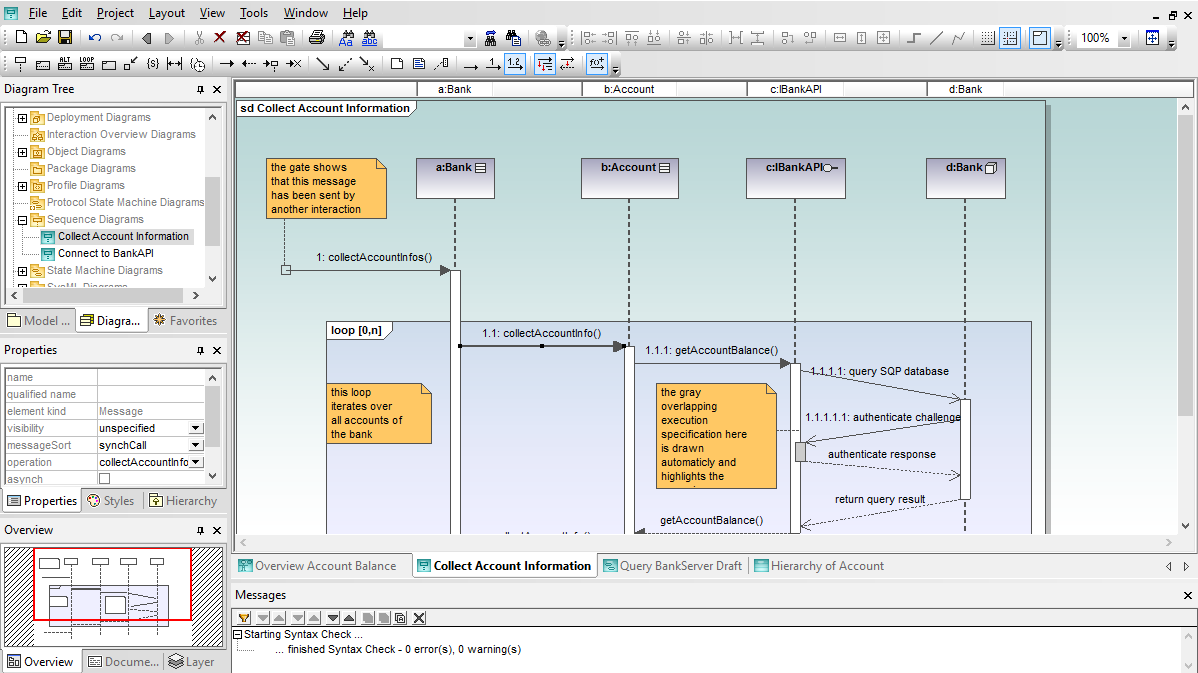UML Sequence Diagrams
UModel ueses sequence diagrams to describe the interactions between objects in an application and the messages objects send and receive.

When you create a new sequence diagram, UModel automatically displays the sequence diagram toolbar for quick access to specialized UML elements including lifelines, combine fragments, gates, message call and reply arrows, message arrows that create new lifelines or destroy existing objects, notes, and more. UModel offers flexible options for sequence diagrams to support your UML diagramming style. You can choose to:
- Automatically create a syntactically correct reply whenever a message is added
- Select Go To Operation from the right-click context menu to assign a message based on an operation listed in the Model Tree
- Select simple consecutive message numbers or nested (decimal) message numbering via the sequence diagram toolbar
- Apply time constraints to sequences, using familiar timing diagram notation . . . and much more. UModel lets you easily do it all.



